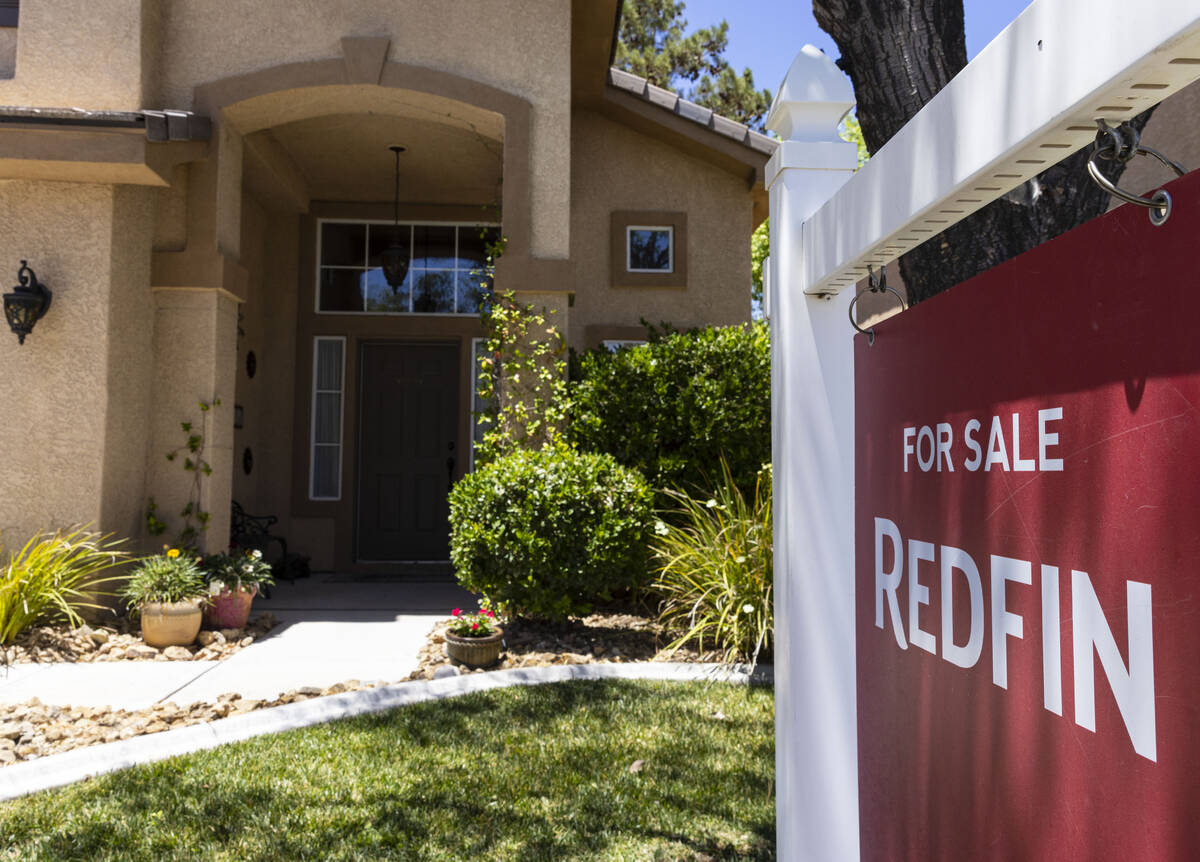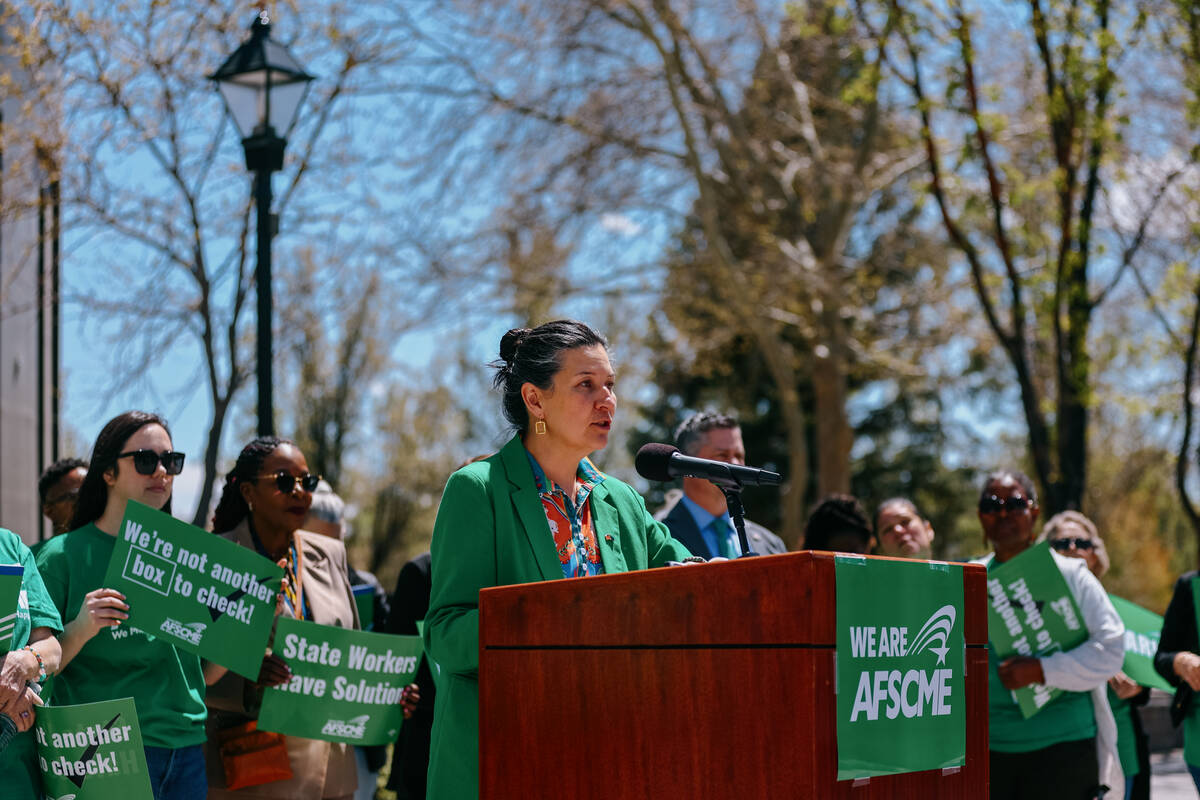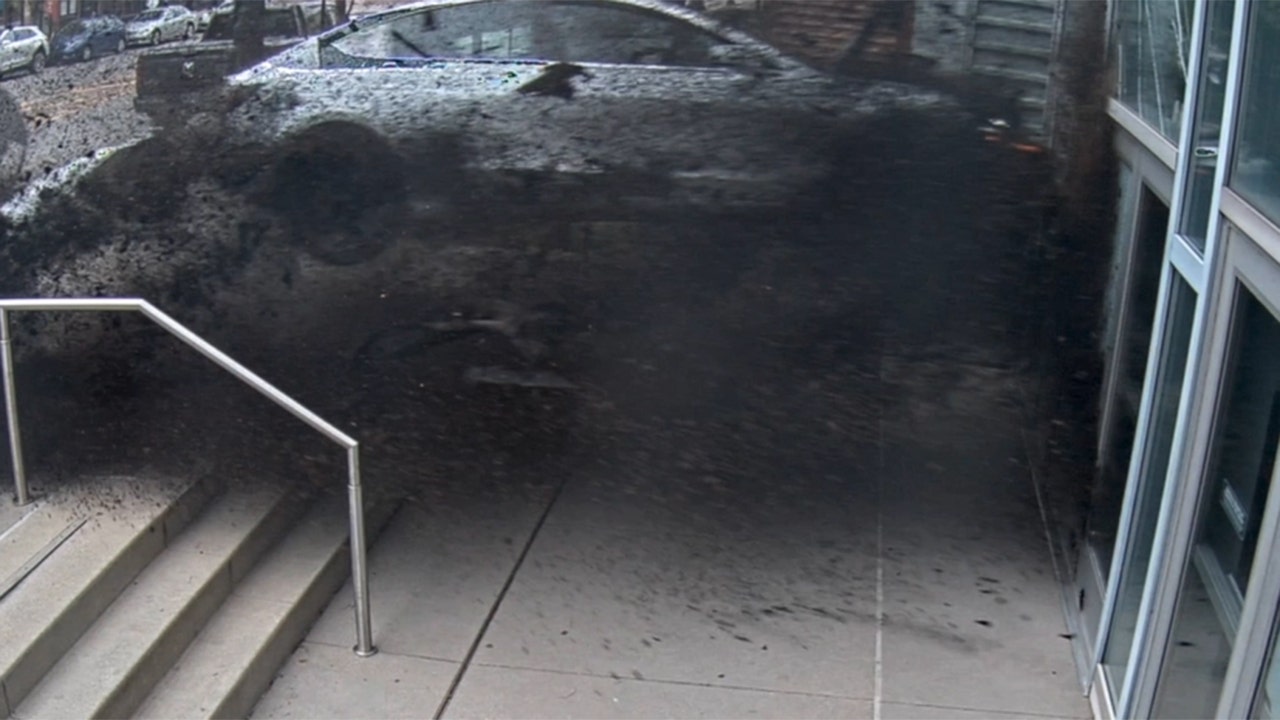Nevada
2-Year-Old Nevada Boy Dies from Brain-Eating Amoeba: ‘He Fought 7 Days’
:max_bytes(150000):strip_icc():focal(882x34:884x36)/woodrow-bundy-072023-110db9414dcd444c8f2444b05cef2383.jpg)
A 2-year-old boy has died one week after battling Naegleria fowleri, or brain-eating amoeba. The toddler contracted the rare virus while swimming in Ash Springs, Nevada.
“Woodrow Turner Bundy returned victoriously to our father in heaven at 2:56 am. He fought 7 days,” his mother, Briana Bundy, wrote in an emotional Facebook post. “I knew I had the strongest son in the world. He is my hero and I will forever be grateful to God for giving me the goodest baby boy on earth, and I am grateful to know I will have that boy in heaven someday ”
According to friends of the family, Woodrow started experiencing “flu-like symptoms” last week when his parents decided to take him to the hospital. Doctors initially assumed it was meningitis and began treatments. However, it was later determined that the toddler’s symptoms were a result of brain eating amoeba.
Woodrow died Wednesday morning from the infection.
“I am so proud of the spirit Woodrow is,” Briana wrote. “He lived life so aggressively. He never wasted a moment. He found joy in all things. He found beauty and adventure and love in all of God’s creations. His excitement for life was unmatched. I’ve never seen the joy and aggression to show love the way he expressed it.”
“Although I am gutted, I know that is just the selfishness of me as his mommy. He left his mark,” she added. “I will see my boy soon enough and it will be even more sweet and tearful as it was letting him progress to eternity ”
Friends of the Bundy family have since created a GoFundMe account in order to help cover medical and funeral costs.
Florida Teen Flown to Chicago to Rehabilitate from Brain-Eating Amoeba: ‘Long Road Ahead of Him’
Todd Engel/gofundme
Brain-Eating Amoeba: What You Need to Know This Summer
Naegleria fowleri, commonly referred to as brain-eating amoeba, is a single-celled living organism that can cause a rare and almost always fatal infection of the brain called primary amebic meningoencephalitis (PAM). According to a CDC report, only four people in the U.S. out of 151 from 1962 until 2020 have survived the infection.
Brain-eating amoeba is most commonly found in warm fresh waters such as lakes, rivers and hot springs. It can also survive in poorly maintained or minimally chlorinated swimming pools, where it feeds on bacteria.
Symptoms of brain-eating amoeba generally start one to nine days after nasal exposure and many people die within 18 days of showing symptoms, according to the CDC. These include severe headaches, fever, nausea and vomiting in the first stage and stiff neck, seizures, altered mental status, hallucinations and a coma in the second stage. PAM, the infection caused from the amoeba, is ultimately hard to detect though, because of the rapid progression of the disease. Diagnosis is typically made postmortem.
Although infection is rare (there are less than 8 infections per year), there is currently no way to reduce the number of amoebas in water. On its website, the CDC says it is “unclear how a standard might be set to protect human health and how public health officials would measure and enforce such a standard.”
The only guaranteed way to avoid brain-eating amoeba infections is to refrain from participating in water-related activities in warm freshwater. “Anyone that enjoys time in a body of water should cover their nose before they go in or use nose clips,” Mirna Chamorro, Florida Department of Health in Orange County spokeswoman, previously told PEOPLE. “As long as they don’t put their head under water, they are okay.”

Nevada
Nearly 12% of Nevada's student loan holders in default as federal collection efforts restart

LAS VEGAS (KTNV) — Nearly 5 million people across the country have not made payments on their student loans for nearly a year (360 days), according to the U.S. Department of Education.
But starting May 5, the department will begin collecting money from those who have defaulted, the department announced last Monday.
WATCH | What the federal collection efforts will mean for Nevadans
Nearly 12% of Nevada’s student loan holders in default as federal collection efforts restart
The mandatory collections come after a five-year pause sparked by the COVID-19 pandemic.
Bethel Kifle, a second-year mechanical engineering student at UNLV, has only taken out one student loan so far.
“I was taking summer classes and since I couldn’t use the fall scholarship yet, I just took out a loan, so I don’t have to use my personal money cause again, I need it for — to pay other stuff like bills and stuff. The loan helped me get through that summer without being zero dollars in my banking account,” Kifle said.
Even though she won’t be required to pay the loan back until after graduation, Kifle already has a plan in place.
“The big scholarship I had, I ended up getting like $9,000 refund, so I saved that money just so I can use to pay back the loan that I took out,” Kifle said.
But not everyone is as prepared. According to the U.S. Department of Education, 42.7 million borrowers have more than $1.6 trillion in student debt.
Roughly $12.4 billion of that money is owed by Nevada borrowers, according to the Education Data Initiative. Nearly 12% of them are in default.
“If you take out a loan, you have to pay it back, it’s very simple,” said Karoline Leavitt, White House press secretary.
While no loans have been sent to collections since 2020, Trump administration officials announced that will no longer be the case. They say people who don’t make a repayment plan by the May 5 deadline could face involuntary collections.
WATCH | Student loans in default to be referred to debt collection, Education Department says
Student loans in default to be referred to debt collection, Education Department says
“The government can and will collect defaulted federal student loans debt by withholding money from borrowers, tax refunds, federal pensions and even their wages,” Leavitt said.
Kifle’s recommendation for her fellow students is to keep applying for scholarships.
“Every semester, I’m still applying to scholarships. Loans should be the very last resort,” Kifle said.
All borrowers in default will receive email communications from Federal Student Aid (FSA) over the next two weeks making them aware of these developments and urging them to contact the Default Resolution Group to make a monthly payment, enroll in an income-driven repayment plan, or sign up for loan rehabilitation.
Detailed information to help borrowers get out of default is also available at StudentAid.gov/end-default.
This story was reported by a journalist and has been converted to this platform with the assistance of AI. Our editorial team verifies all reporting on all platforms for fairness and accuracy.
Nevada
NEVADA VIEWS: Rent control will hurt average Nevadans

As the owner of a property management company and a real estate investor, I adamantly oppose rent control. Those in favor might say, “Of course you do.” They might accuse me of seeking to get rich off the backs of blue-collar, middle- and lower-class working people. But they’d be wrong.
I immigrated to this country from Sri Lanka when I was 22. My determination and work ethic are what got me where I am today. It is the same determination I see in the landlords who hire my company to manage their properties. And to continue the unmasking, I’m also a Democrat. Rent control is not a partisan issue. It is an economic one.
Rent-control policies, often promoted as a remedy for rising housing costs, produce unintended consequences, including squeezing the very backbone of local real estate — mom-and-pop landlords, many of whom are in blue-collar, middle-class families.
For countless small-property owners, a modest rental home is more than just an investment. It is built over years of hard work and careful financial planning. These landlords often own fewer than five properties — and sometimes just one. According to a recent JP Morgan Chase report, there are 50 million residential rental units across the country, and more than 40 percent belong to mom-and-pop landlords. The goal of these landlords is supplemental income. Yet rental income must first be used to cover maintenance costs and property taxes as well as repairs and maintenance. When government policies impose strict rent controls, these families not only find their potential revenue streams capped but also struggle to cover costs.
As a property manager, I have a front-row view to the good, the bad and the ugly of being a small landlord. One recent “bad” was the impact of the rent moratorium implemented during the pandemic. This moratorium was designed to protect tenants during that challenging economic time — and for some it was much needed. But this measure inadvertently hurt middle-class real estate investors.
With rental income frozen or significantly reduced, many small landlords struggled to meet their financial obligations. The result was foreclosures, deferred maintenance, deteriorating property conditions and — in some cases — the forced sale or abandonment of cherished family assets. This not only undermined the financial stability of these landlords but also contributed to a decline in the overall quality and availability of rental housing.
I could tell story after story, but here are just a few examples:
A local woman who works at a Strip casino as a Culinary union housekeeper went months without receiving rent. A 67-year-old electrician nearly faced bankruptcy without rental reimbursements. A city bus driver had to postpone retirement. A terminally ill property owner who relied on rental income to support his family went 10 months without payments. And a young nurse from the Philippines who purchased her first investment home endured more than a year without rent. These are regular, everyday Nevadans, who don’t have huge nest eggs.
These and other landlords have worked hard to recover. As a community, we should applaud this and be grateful for the needed housing they provide.
My worry, though, is that their hard work will be in vain and that things could turn ugly. Last legislative session, rent control was proposed. Thankfully it was vetoed and never enacted, but I’ve heard rumors that it potentially could again be proposed.
Rent control benefits very few — and not necessarily those with the greatest need. When landlords cannot adjust rents to match market rates, the entire rental ecosystem suffers. Properties fall into disrepair, vacancies rise and the promise of a vibrant, sustainable rental market dims. Ultimately, some tenants may enjoy lower rents in the short term. But more will not, and Nevadans as a whole will witness a future with fewer available, well-maintained rental homes.
Sanje Sedera is president at Las Vegas Integrative Medicine, a broker/owner of Zenith Realty Group and a former commissioner of the Southern Nevada Regional Housing Authority.
Nevada
Carson City lowers expectations for Nevada revenue projection report

CARSON CITY — Nevada lawmakers are anxiously awaiting a May 1 forecast of how much money the state will have to fund services and new programs for its next two-year budget cycle.
There is already a consensus that revenues will fall below predictions used to create the state budget. But just how far below is a question being raised in budget hearings, in hallway conversations and at press conferences in the days leading up to Thursday’s Economic Forum.
Assembly Minority Floor Leader Gregory Hafen, R-Pahrump, said expectations were “already bad” during a Monday meeting of the joint Assembly Ways and Means and Senate Finance committees.
“Heaven forbid the Economic Forum come back much worse than most of us are projecting it to be,” he said.
$12.4 billion question
The Economic Forum is a panel of experts who forecast the state’s general fund revenues, including the sales and use tax, gaming percentage fee, live entertainment tax, commerce tax, modified business tax and real property transfer tax. Its most recent forecast from December was used by Gov. Joe Lombardo’s staff to craft Lombardo’s proposed budget for the 2026-2027 biennium.
That forecast predicted the state could count on $12.4 billion in revenue during the next two-year budget cycle, about 3.4 percent more than it is expected to receive over the entire the 2024-2025 biennium.
The state’s economic outlook has changed since then, and expectations of lowered revenue are already playing out.
Alexander Marks, deputy executive director of field and communications for the Nevada State Education Association, said the education lobbying group can see the economy’s impact in the governor’s recommended per-pupil spending increase of only $2 in the 2026 fiscal year and $70 for the 2027 fiscal year.
“Why does it appear that way? I mean, I hate to just say vibes, but I mean, certainly the comments that are being made by some of them, the budget meetings,” Marks said. “The $2 per pupil budget increase – it’s like, if we had the money, (Gov. Joe Lombardo would) be offering more.”
Uncertainty driving the conversation
The source of many of the concerns is far outside of lawmakers’ control, including trade tensions that has led to a softening of international travel and increased uncertainty about the impact of tariffs on the domestic economy.
“We know our economy is deeply reliant on tourism,” said Sen. Rochelle Nguyen, D-Las Vegas, at a Wednesday press conference in Carson City. “When trade wars disrupt the global economy, it directly impacts disposable income of tourists, both domestic and international.”
Efforts to pare back the federal government’s $1.3 trillion budget deficit could have an outsized impact on the 28 percent of the Silver State’s budget that comes from the U.S. taxpayers. Most of that money supports the Department of Health and Human Services, which manages the state- and federally-funded Medicaid program, which provides coverage to some 822,000 Nevadans, according to a report from the nonpartisan Kenny Guinn Center for Policy Priorities.
Marks said his group is advocating for changes suggested by the Commission on School Funding, including changes to the state’s property tax structure by resetting depreciation to capture more property taxes, as described in Assembly Joint Resolution 1, but it’s a long-term fix; that reform would require the approval of the legislature, governor twice before being put before voters in 2028.
Bracing for bad news
A Wednesday meeting gave some insight into what to expect from the next Economic Forum report.
Fiscal analysts gave the Technical Advisory Committee on Future State Revenues a preview on non-major revenue sources. The discussion on smaller taxes, including the liquor tax, gaming penalties and the “transportation network tax” on rideshares and cabs, suggested a slowing economy would affect the state’s revenue sources.
“All of the forecasters did reduce their forecasts to some degree because of expectations of softening of tourism and the year-to-date actuals not coming in as predicted to this point,” Michael Nakamoto, a fiscal analyst in the Legislative Counsel Bureau, said during the meeting.
Forecasters projected a $16 million drop in non-major revenue sources each budget year compared with the previous economic forum report. They also reported a $102 million reduction in general fund revenue in the first nine months of the 2025 fiscal year compared with the same period in 2024, which Nakamoto said was skewed by revenue collected when Las Vegas hosted the Super Bowl.
“If they are visitors, or would-be visitors to Nevada, they might be rethinking it for any number of reasons,” he said when talking about the nearly 11 percent decline in liquor tax revenue projected for the 2025 fiscal year. “Or if they live here, they might be foregoing buying alcohol because they need to buy something else.
“And that’s kind of one of the uncertainties, and it’s the great unknowns that we’re sitting and looking at, and it’s honestly one of the things that keeps me up at night as a forecaster.”
Contact McKenna Ross at mross@reviewjournal.com. Follow @mckenna_ross_ on X.
-
News1 week ago
Harvard would be smart to follow Hillsdale’s playbook. Trump should avoid Biden’s. | Opinion
-
Business1 week ago
Porto's Bakery moving forward in Downtown Disney, replacing Earl of Sandwich
-

 Politics6 days ago
Politics6 days agoVideo: Hegseth Attacks the Media Amid New Signal Controversy
-

 Culture5 days ago
Culture5 days agoNew Poetry Books That Lean Into Calm and Joy Amid Life’s Chaos
-

 Politics1 week ago
Politics1 week agoSupreme Court blocks new deportations of Venezuelans in Texas under 18th century Alien Enemies Act
-

 News1 week ago
News1 week agoMaps: Where Do Federal Employees Work in America?
-

 Politics7 days ago
Politics7 days agoPope Francis and US presidents: A look back at his legacy with the nation's leaders
-

 World6 days ago
World6 days agoNew Zealand’s minor gov’t party pushes to define women by biological sex

















